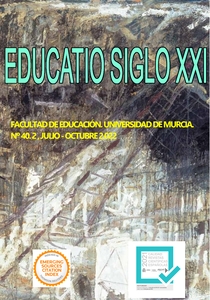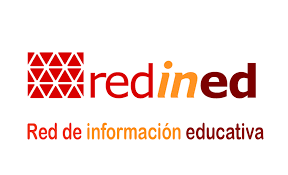Design of an assessment questionnaire for the competences of Secondary School Teachers (SEVADES). Application to the Secondary Schools of Santander
Abstract
Whether the identification of attitudes and behaviors good teachers should have is a daunting task, the assessment of these aspects, which is normally undertaken by students or agencies exterior to schools, is even more so. This study devised a new rating system to appraise the competences of secondary school teachers (SEVADES) through an in-depth literature review and questionnaires collected from 22 secondary education institutions in Santander (Spain). The application of the new tool aimed to self-evaluate 88 teachers from private and state schools, who obtained an average score of 8.341 points (Very good). For state secondary schools, scarce differences between the assessment of managers and teachers were reported. Regarding private institutions, managers slightly outperformed lecturers’ scores. Whilst Leadership was the most appreciated attitude, Vocation was assigned the lowest rates.
Downloads
-
Abstract1351
-
PDF (Español (España))737
References
Bauman, Z. (2005). Vida líquida. Barcelona: Paidós.
Bendar, A., & Levie, W.H. (1993). Attitude-change principles en M. Fleming y W.H. Levie (eds.). Instructional message design. Englewood Cliffs: ETP.
Bruns, B., & Luque, J. (2014). Profesores excelentes: Cómo mejorar el aprendizaje en América Latina y el Caribe. Washington, DC: Banco Mundial. https://openknowledge.worldbank.org/bitstream/handle/10986/20488/Spanish-excellent-teachers-report.pdf?sequence=5
Caballero Montañez, R., & Sime Poma, L. (2016). Buen o buena docente desde la perspectiva de estudiantes que han egresado de educación secundaria. Revista Electrónica Educare, 20(3). http://dx.doi.org/10.15359/ree.20-3.4
Camps, V. (2008). Creure en l’educació. Barcelona: Edicions 62.
Cárdenas, C.S. (2008). Identificación de tipologías de actitud hacia las matemáticas en estudiantes de séptimo y octavo grados de educación primaria. Perfiles Educativos, XXX(122), 94-108.
Cardoso, E.O., Vanegas, E.A., & Cerecedo, M.T. (2012). Diagnóstico sobre las actitudes hacia las Matemáticas del estudiantado que inicia sus estudios en tres posgrados en Administración de Empresas. Revista Electrónica Educare, 16(2), 237-253. http://doi.org/10.15359/ree.16-2.15
Coll-Serrano, V., Pardo-Garcia, C., & Perez P.J. (2018). Teaching-learning methods and their effect on professional development and the development of graduates’ competencies. Cultura y Educacion, 30(3), 556-583. https://doi.org/10.1080/11356405.2018.1494773
Collins, M. (2011). Historiography from below: How undergraduates remember learning history at School. Teaching History, 142, 34-37. https://dspace.lboro.ac.uk/2134/12160
Cotnoir, C., Paton, S., Peters, L. Pretorius, C., & Smale, L. (2014). The Lasting Impact of Influential Teachers. Education Resource Information Center (ERIC). http://files.eric.ed.gov/fulltext/ED545623.pdf
Covarruvias, P., & Piña, M.M. (2004). La interacción maestro-alumno y su relación con el aprendizaje. Revista Latinoamericana de Estudios Educativos, 34(1), 47-84.
Delors, J. (1994). Los cuatro pilares de la Educación. En: La Educación encierra un tesoro. El correo de la UNESCO, 91-103.
Educantabria, Consejería de Educación, Cultura y Deporte del Gobierno Regional de Cantabria. (2018). Estadística de la Educación en Cantabria. Recuperado de https://www.educantabria.es/docs/2018/octubre-noviembre-diciembre/ESTADISTICA_DEL_ALUMNADO/Curso_2017-2018.pdf el 11 de enero de 2019.
Esteve, J.M. (2009). La formación de profesores: bases teóricas para el desarrollo de programas de formación inicial. Revista de Educación, 350, 15-29. http://www.educacionyfp.gob.es/revista-de-educacion/numeros-revista-educacion/numeros-anteriores/2009/re350.html
Evans, J. (2006). Dual System Theories of Cognition: Some Issues. Proceeding of the 28th Annual Meeting of the Cognitive Science Society. Lawrence Erlbaum Press, Vancouver, 202-207.
Fajardo Bullón, F., Maestre Campos, M., Felipe Castaño, E., León del Barco, B., & Polo del Río, M.I. (2017). Análisis del rendimiento académico de los alumnos de Educación Secundaria Obligatoria según las variables familiares. Educación XX1, 20(1), 209-232. https://doi.org/10.5944/educXX1.14475
Farrell, K. (2011). Collegial feedback on teaching: A guide to peer review. Centre for the Study of Higher Education. http://files.digitisation.unimelb.edu.au/playpen/PeerReview_teach_1-5-jpeg.pdf
Gallardo Fernández, I.M., De Castro Calvo, A., & Saiz Fernández, H. (2020). Interacción y uso de tecnologías en los procesos de enseñanza y aprendizaje. Educatio Siglo XXI, 38(1 Marzo-Ju), 119-138. https://doi.org/10.6018/educatio.413441
Giner, A. (2008). La resiliencia en tutoría como estrategia para mejorar la salud mental. Manual de orientación y tutoría. Tercer cuatrimestre. http://es.scribd.com/doc/9824126/Resiliencia- Articulo
González, J., & Wagenaar, R. (2003). Tuning Educational Structures in Europe. Informe Final. Bilbao: Universidad de Deusto.
González Álvarez, M. (2020). Algunas valoraciones del profesorado respecto a su función tutorial. Educatio Siglo XXI, 38(1 Marzo-Ju), 139-160. https://doi.org/10.6018/educatio.413451
Hervás, R.M. (2005). Estilos de enseñanza y aprendizaje en escenarios educativos. Murcia: Grupo Editorial Universitario.
Huertas, A., & Pantoja, A. (2016). Efectos de un programa educativo basado en el uso de las TIC sobre el rendimiento académico y la motivación del alumnado en la asignatura de tecnología de educación secundaria. Educación XX1, 19(2), 229-250. https://doi.org/10.5944/educxx1.16464
Janssen, E.M., Mainhard, T., Buisman, R.S.M., Verkoeijen, P.P.J.L., Heijltjes, A.E.G., van Peppen, L. M., & van Gog, T. (2019). Training higher education teachers’ critical thinking and attitudes towards teaching it. Contemporary Educational Psychology, 58, 310-322. https://doi.org/10.1016/j.cedpsych.2019.03.007
Jennings, P., & Greenberg, M. (2009). The Prosocial Classroom: Teacher social and emotional competence in relation to student and classroom outcomes. Review of Educational Research, 79(1), 491-525. https://doi.org/10.3102/0034654308325693
Karami, S., Shobeiri, S.M., Jafari, H., & Jafari, H. (2017). Assessment of knowledge, attitudes, and practices (KAP) towards climate change education (CCE) among lower secondary teachers in Tehran, Iran. International Journal of Climate Change Strategies and Management, 9(3), 402-415. https://doi.org/10.1108/IJCCSM-04-2016-0043
Koth, C., Bradshaw, C., & Leaf, P. (2008). A multilevel Study of predictors of student perceptions of school climate: The effect of classroom-level factors. Journal of Educational Psychology, 100(1), 96-104. https://doi.org/10.1037/0022-0663.100.1.96
Linares, J.L. (2000). Identidad y narrativa. Barcelona: Paidós.
Lomas, L., & Nicholls, G. (2005). Enhancing teaching quality through peer review of teaching. Quality in Higher Education, 11(2), 137-149. https://doi.org/10.1080/13538320500175118
López, S. (2003). Construcción sociocultural de la profesionalidad docente: Estudio de casos de profesores comprometidos con un proyecto educativo (Tesis de doctorado). Universidad de Valencia, España.
López-González, L., & Oriol, X. (2016). The relationship between emotional competence, classroom climate and school achievement in high school students. Cultura y Educación, 28(1), 130-156. https://doi.org/10.1080/11356405.2015.1120448
Lyng, S.T., & Blichfeldt, J.F. (2003). Attracting, developing, and retaining effective teachers. Country background report for Norway. Oslo: OCDE. http://www.oecd.org/education/school/2635707.pdf
Maciel de Oliveira, C. (2018). Análisis y valoración de las necesidades de formación de profesores principiantes de Educación Secundaria en Uruguay como base para el diseño de un programa de desarrollo profesional. Educación XX1, 21(1), 63-86. http://revistas.uned.es/index.php/educacionXX1/article/view/20176/16712
Meng, L., Muñoz, M.A., & Wu, D. (2016). Teachers’ perceptions of effective teaching: A theory-based exploratory study of teachers from China. Educational Psychology, 36(3), 461-480. https://doi.org/10.1080/01443410.2015.1008402
Moreno, M. (2012). Docentes que dejan huella. Málaga: Consejería de Educación. Delegación Provincial de Málaga. Junta de Andalucía. http://www.andaluciacreativa.com/docentesquedejanhuella/files/2012/10/Docentes-que-dejan-huella-LIBRO.pdf
OCDE. (2010). Evaluación y reconocimiento de la calidad de los docentes: Prácticas Internacionales. Paris: OECD Publishing. https://doi.org/10.1787/9789264079717-es
Ortega Palacios, I., & Álvarez Alvarez, C. (2015). Cuatro años de grupos interactivos: estudio de caso de un centro educativo pionero. Educatio Siglo XXI, 33(2 Julio), 105-122. https://doi.org/10.6018/j/232711
Peng, W.J., McNess, E., Thomas, S., Wu, X.R., Zhang, C., Li, J.Z., & Tian, H.S. (2014). Emerging perceptions of teacher quality and teacher development in China. International Journal of Educational Development, 34(1), 77-89.
Regueiro, B, Valle, A, Núñez, J.C., Rosario, P., Rodríguez, S., & Suárez, N. (2017). Changes in involvement in homework throughout compulsory secondary education. Cultura y Educación, 29(2), 254-278. https://doi.org/10.1080/11356405.2017.1306988
Rhodes, C., & Beneicke, S. (2002). Coaching, mentoring, and peer-networking: Challenges for the management of teacher professional development in schools. Journal of In- Service Education, 28(2), 297-310. https://www.tandfonline.com/doi/abs/10.1080/13674580200200184
Saglam, M. (2015). Primary school students of 1980s’ Turkey remembering their teachers. Educational Research and Reviews, 10(6), 761-768. https://doi.org/10.5897/ERR2014.1915
Seldin, P. (1999). Current practices -good and bad- nationally. In: Seldin P (ed.). Changing practices in evaluating teaching: A practical guide to improved faculty performance and promotion/tenure decisions. Bolton, M.A: Anker, 1-24.
Stanovich, K.E. (2002). Rationality, intelligence, and levels of analysis in cognitive science: Is dysrationalia possible? En R.J. Sternberg, Why Smart people can be so stupid (pp. 124-158). New Haven, CT: Yale University Press.
Stedman, N., & Adams, B. (2012). Identifying Faculty’s Knowledge of Critical Thinking Concepts and Perceptions of Critical Thinking Instruction in Higher Education. Nacta Journal, 56(2), 9-14.
Taut, S., & Sun, Y. (2014). The development and implementation of a national, standards-based, multi-method teacher performance assessment system in Chile. Education Policy Analysis Archives, 22.
Tuñón, M.C., & Victoria, M. (2009). Características del discurso en el aula de clase como mediación para el desarrollo de pensamiento crítico en Zona Próxima. Revista del Instituto de Estudios en Educación Universidad del Norte, 11, 144-159.
Wilkins, E.A., & Shin, E.-K. (2010). Peer feedback: Who, What, When, Why and How. Kappa Delta Pi Record, 46(3),112-117. https://doi.org/10.1080/00228958.2010.10516707
Vaillant, D. (2006). Atraer y retener buenos profesionales en la profesión docente: Políticas en Latinoamérica. Revista de Educación, 340, 117-140.
Vera Pedroza, A., & Mazadiego Infante, T.J. (2010). Una perspectiva sobre las actitudes y el deber ser de los docentes en el aula escolar. Revista de Educación y Desarrollo, 14, 53-58.
Copyright (c) 2022 Servicio de Publicaciones de la Universidad de Murcia

This work is licensed under a Creative Commons Attribution-NonCommercial-NoDerivatives 4.0 International License.
Original work publishes in this journal is subject to the following terms:
1. Murcia University Press (the publishing house) holds the copyright of the publishes work, and favours and allows their reutilization under the use license stated in point 2.
© Servicio de Publicaciones, Universidad de Murcia, 2015
2. Work is published in the electronic edition under a license (Creative Commons Reconocimiento-NoComercial-SinObraDerivada 4.0 España (legal text). They can be copied, used, disseminated, transmitted and publicly presented, as long as: i) authorship and original publication source is acknowledged (journal, publishing house and URL of the work); ii) are not used for commercial purposes; iii) the existence and specifications of this use license is stated.
3. Conditions for self-archive. Authors are allowed and encouraged to disseminate electronically the pre-pint (before review) and/or post-print (accepted for publication) versions of their work before their publication since that favours earlier circulation and dissemination resulting in an increased chance for the authors to be cited and for the work to reach a bigger share of the academic community. Colour: RoMEO: green.








